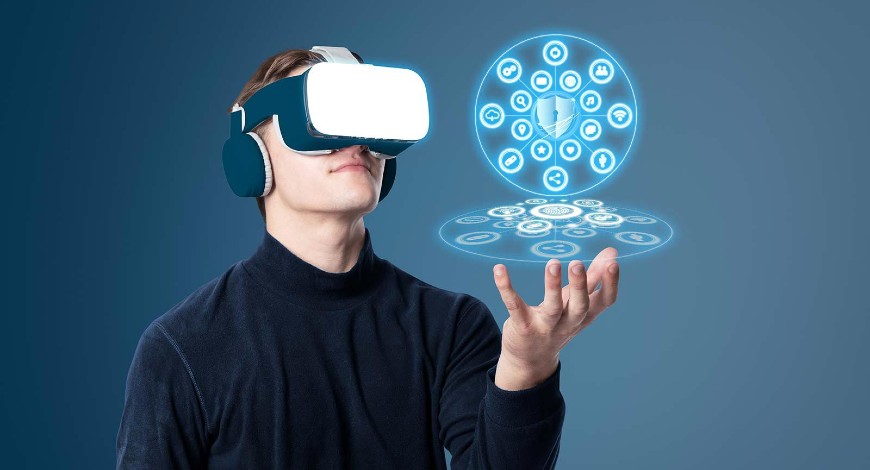Artificial Intelligence (AI) and Virtual Reality (VR) are two cutting-edge technologies that have rapidly gained momentum in recent years, each offering unique capabilities to transform various aspects of our lives. When combined, AI and VR have the potential to create immersive experiences that blur the lines between the physical and digital worlds. In this article, we’ll explore how AI and VR are converging to pioneer new frontiers in immersive experiences.
Enhancing Realism with AI in VR:
Virtual Reality creates simulated environments that immerse users in a completely digital world. However, to make these experiences truly immersive, AI can play a crucial role. AI algorithms can analyze user behavior and interactions within the virtual environment in real-time, allowing for dynamic adjustments to enhance realism and engagement. For example, AI can generate realistic textures, adjust lighting conditions based on user preferences, or even create interactive characters with human-like behaviors.
Personalized Experiences through AI:
AI-powered personalization is another area where AI and VR intersect to create immersive experiences. By analyzing user data and preferences, AI algorithms can tailor virtual environments and content to individual users, providing personalized experiences that cater to their interests and preferences. Whether it’s customizing virtual landscapes, recommending relevant content, or adapting gameplay based on skill level, AI-driven personalization enhances user engagement and satisfaction in VR.
Natural Language Interaction in VR:
Advancements in natural language processing (NLP) have enabled seamless interaction with virtual environments using voice commands and natural language. Integrating AI-powered voice recognition technology into VR experiences allows users to communicate with virtual characters, control virtual objects, and navigate virtual worlds using voice commands. This not only enhances the immersion factor but also makes VR more accessible and intuitive for users of all ages and backgrounds.
AI-Powered Avatars and NPCs:
Avatars and non-player characters (NPCs) are integral components of many VR experiences, providing interaction and context within virtual environments. AI technologies such as machine learning and computer vision enable the creation of intelligent avatars and NPCs that can adapt their behavior, gestures, and responses based on user interactions and environmental cues. This creates more lifelike and engaging interactions, blurring the boundaries between virtual and real-world experiences.
Revolutionizing Training and Education:
AI and VR are revolutionizing training and education by providing immersive and interactive learning environments. AI-powered virtual tutors and trainers can provide personalized feedback, adapt learning materials to individual learning styles, and simulate real-world scenarios for hands-on training. This approach is particularly valuable in fields such as healthcare, aviation, and manufacturing, where hands-on experience is essential but often challenging to provide in real-world settings.
Challenges and Future Directions:
While the integration of AI and VR holds immense potential for immersive experiences, several challenges remain. Privacy concerns, ethical considerations, and technical limitations are some of the key areas that need to be addressed. Additionally, advancements in AI and VR technologies must be accompanied by efforts to ensure accessibility, inclusivity, and ethical use of these immersive experiences.
In conclusion, the convergence of AI and VR is driving the development of immersive experiences that push the boundaries of what is possible. From enhancing realism and personalization to revolutionizing training and education, the combination of AI and VR is unlocking new opportunities for immersive storytelling, entertainment, and learning. As these technologies continue to evolve, we can expect to see even more groundbreaking innovations that transform the way we interact with virtual worlds and each other.
Team T2S1.

